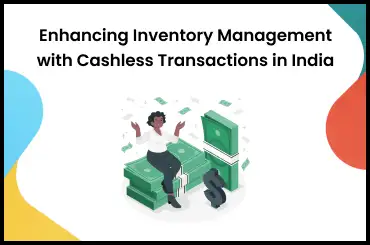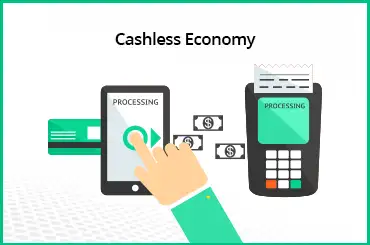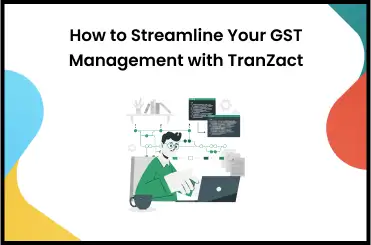The delivery challan plays an important role for smooth and transparent logistics. Without properly managed delivery challans, businesses can face many challenges, such as disputes over received goods, inventory mismatches, and delays in the supply chain. These issues disrupt operations and also strain customer relationships and affect the company's credibility.
In this blog post, we will understand what is delivery challan, the delivery challan format under GST, and the procedure for issuing a delivery challan.
What Is Delivery Challan?
A delivery challan is a record of goods transported from one location to another under specific circumstances as outlined by the GST law. As per Section 31 of the CGST Act of 2017, everyone registered to provide or transport taxable goods or products should provide an invoice with the amount and other relevant information.
Similarly, a delivery challan is also necessary for the shipping and transportation of products. This document plays an important role in the transportation and delivery of consignments.
Also known as a dispatch challan or a delivery slip. The purpose of delivery challan is the identification of the delivery of the items to the customer and law. The document also contains information like the goods' recipient, locations, and delivery date.
A delivery challan under GST must be generated regardless of the sale of goods or services. An invoice for taxes, on the other hand, is not required when moving items between warehouses. This means a delivery challan is always sent with the shipped goods, whether you buy it or not.
When Is Delivery Challan Issued?
A delivery challan is issued under very specific conditions. As per the delivery challan rules, following are the conditions:
- When you need to calculate the number of products to be sent.
- When the recipient of the goods is unaware of the supplier's business location.
- If items are being provided after approval.
- Whenever items are transported for work.
- When the quantity of the goods delivered is not known.
- When goods are shipped on a sale or return basis.
- When shipping goods for reasons other than supply.
- When the vendor is unable to provide a tax invoice
- In cases where the Central Board of Excise and Customs (CBEC) has made it mandatory.
. Note - The provider must produce a tax invoice on the products after delivering them to the recipient using a delivery challan.
Read Best Practices For Managing Delivery Challans in Manufacturing Business
E-Way Bill and E-Invoice with Delivery Challan
The E-Way Bill is an important document in the GST regime. It becomes even more important when we talk about the eway bill on Delivery Challan. An E-Way Bill is a document that is required for the transportation of goods worth more than INR 50,000 within India. It can be generated from the GST portal.
This document is required for the movement of goods, whether it's interstate or intrastate, and it must be generated before the transportation. The eway bill delivery challan serves as a proof of delivery and is a mandatory document for transporters.
With the introduction of E invoice for delivery challan, businesses are required to generate an electronic invoice for every sale transaction. This E-Invoice system extends to Delivery Challans as well. The E-Invoice for a Delivery Challan makes sure that all details of the transaction are available digitally and can be easily tracked and verified by the GST authorities.
Delivery Challan Format
The delivery challan format may vary from business to business, but here are some mandatory aspects to include in the document. This section will guide you on how to generate delivery challan in e way bill and what format should challan be. A delivery challan should include:
- A predetermined serial number.
- The date of issuance of the delivery challan.
- The consignor's logo, name, address, GSTIN, and CIN (Challan Identification Number)
- The consignee's name, address, and GSTIN, or Unique Identity Number if registered.
- The product description and the Harmonized System of Nomenclature (HSN) code.
- Quantity (provisional, where it is unknown how much will be given).
- The price per unit of the product, the overall sum (derived by dividing the price by the number of units), any discounts provided, and the total taxable value.
- GST amount (CGST, IGST, and intrastate transaction values).
- The supply location, in the event of an interstate movement.
- The authorized person's signature.
Read Also - Difference Between GSTR 2A and 2B
Procedure for Issuing Delivery Challan
The delivery challan must be sent in three copies in accordance with section 55 (2) of the CGST Rules. Usually, the GST delivery challan needs to be printed at least in three copies, but sometimes a fourth copy might be required. These four copies fulfill the four tasks listed below:
- The accounting department receives the first copy.
- The sales division receives the second copy.
- The third copy is for the purchaser.
- The last is stored for record-keeping purposes.
Read Also - What Is Purchase Order Management Software?
GST Rules on Delivery Challan
As per the Section 31 of the CGST Act, it's important to provide a tax invoice when a registered taxpayer plans to transport goods from one place to another. The tax invoice includes information about the invoice value, the description of the delivered items, their quantities, rates, and amounts, as well as the GST that applies to them.
In some circumstances, the transportation does not result in a sale; hence no tax invoice is generated. In these certain circumstances, a delivery challan is issued in place of a tax invoice.
Businesses can also issue a document known as a ‘returnable challan'. These are typically used when goods or assets are not sold but loaned, rented, or temporarily transferred. These documents help make sure of proper tracking and accountability for the return process.
Read Also - Best ERP Inventory Management Software
Retention Rules of Delivery Challan Section Under GST
Every registered person is expected to retain and maintain books of account. This includes retaining delivery challans, for 72 months following the due date of submitting an annual return for the relevant year, following section 36 of the CGST Act.
Difference Between Delivery Challan and Tax Invoice
The key difference between a delivery challan and a tax invoice lies in their purpose and legal implications. Here's a detailed overview of the differences between a delivery challan and a tax invoice:
| Delivery Challan | Tax Invoice |
|---|---|
| A delivery challan in GST does not include documentation of ownership or obligations under the law. | A tax invoice contains documentation of ownership and legal obligations. |
| It demonstrates that the client has acknowledged receiving the products. | The tax invoice shows the goods' true value. |
| This document may or may not lead to a sale. | It demonstrates that a sale transaction actually took place. |
| Delivery challan shows the price of a certain product but not the total sale amount. | It shows the items' true value, including any relevant taxes. |
| A delivery challan cannot be used as the foundation for an input tax credit claim. | A tax invoice can be used as the basis for an input tax credit claim. |
| QR Code and e-invoicing features will not be applicable. | The provisions for e-invoicing and QR codes are applicable. |
TranZact Can Help You With Creating and Maintaining Delivery Challans
You should maintain Books of accounts and other concerned documents when keeping records. Rule 55A of CGST Rules inserted with effect from 23-1-2018 does not require a person to carry an e-way bill, and where a tax invoice or bill of supply is not required. Instead, a delivery challan is included.
Read How to Streamline Your Delivery Challan Process with TranZact
You can create a delivery challan in GST using TranZact. You can also create several other important documents with professional formats on TranZact's cloud-based and GST-compliant platform. Automated document creation helps you to save time and improve supplier relationships significantly. TranZact is an easy to use software that digitizes all manufacturing processes from enquiry to dispatch for Indian SME manufacturers.
FAQs on Delivery Challan under GST-
1. What is the difference between an e-way bill and a delivery challan?
An e-way bill is a digital document generated for the movement of goods worth a certain value, serving as evidence of tax compliance. On the other hand, a delivery challan is a document used to record the transfer of goods from one place to another and serves as proof of delivery without tax-related information.
2. What is a delivery challan?
A delivery challan is a document created when goods are required to be transported from one location to another for various reasons. The outcome of this transfer may or may not lead to sales.
3. Is delivery challan mandatory under GST?
In some cases a delivery challan may be mandatory to serve as proof of delivery and for compliance with transportation regulations. An example of this is when movement of goods without the issuance of a tax invoice.
4. What is written on a delivery challan?
A delivery challan typically includes details such as the quantity, description, and value of the goods being transported, but does not contain tax-related information. The format of a delivery challan may vary from business to business.
5. How to generate an e-way bill for delivery challan?
The GST portal allows any registered transporter or taxpayer to create an e-way bill. You are required to go to the GST portal or an Invoice Registration Portal (IRP), enter the required details and generate an e-way bill. Documents like a tax invoice, a bill of sale, and a delivery challan, can be included when generating an e-way bill.
6. How is an e-way bill different from a delivery challan?
The delivery challan is provided by the supplier or sender of the goods, but the e-way Bill number (EBN) is automatically generated when a GST invoice is created. The EBN will then be listed on the delivery challan, and the transporter can use this EBN to follow the progress of the goods using it.
7. What is the difference between a delivery challan and an invoice?
The invoice serves as the official record of the transfer of ownership of the products or services, together with all the associated risks and liabilities; it also documents the true market value of the commodities. The delivery challan only demonstrates that the consumer has acknowledged receiving the items; it does not demonstrate their legal obligations or ownership.
8. What is the difference between a delivery note and a delivery challan?
A delivery note is only a piece of paper that comes with a package of goods. Contrarily, delivery challans are issued when delivering items to a customer, internal staff, or vendor and may have an effect on inventory levels because they reduce inventory stock.
9. What is a returnable challan?
A returnable challan is a document generated for any items taken out of the warehouse for a specific purpose and must be returned soon.
10. Is GST applicable on delivery challan?
GST is not applicable on a delivery challan. A delivery challan is a document created for the transportation of goods from one place to another, which may or may not result in sales.
11. How to make e way bill for delivery challan?
Lets learn how to create e way bill for delivery challan. An e-way bill can be generated using the GST portal. The process involves providing documents such as tax invoice, bill of sale, or delivery challan. First, you need to login to the e-way bill system, click on Generate new under E-waybill option appearing on the dashboard, and provide the necessary details.
















